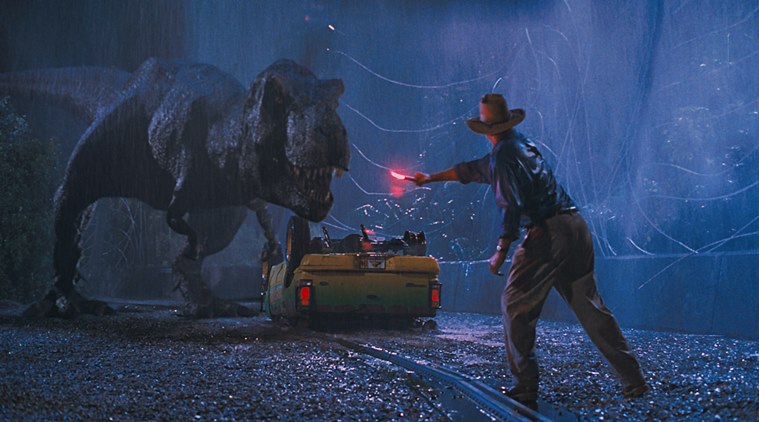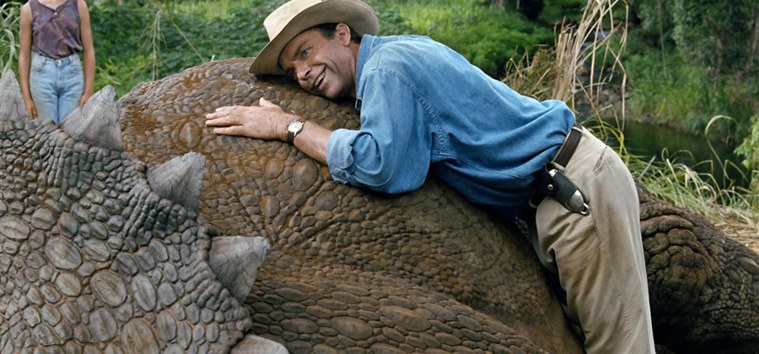 Steven Spielberg’s Jurassic Park is said to have changed Hollywood blockbusters forever. (Photo: Universal Pictures)
Steven Spielberg’s Jurassic Park is said to have changed Hollywood blockbusters forever. (Photo: Universal Pictures)
‘A reading list’ is a new series that suggests good reading material that is either related to a particular film or TV show or something that enhances the understanding of one of the topics, plot elements, or themes that film or TV show explores.
Steven Spielberg’s Jurassic Park is said to have changed Hollywood blockbusters forever. Adapted from Michael Crichton’s best-selling 1990 novel of the same name by Crichton himself and David Koepp, the film starred Sam Neill, Laura Dern, Jeff Goldblum and Richard Attenborough. It was an entertaining popcorn flick with eye-popping visuals and stunning background score.
But Jurassic Park had deeper things to say than the usual summer blockbuster, meditating on themes like the audacity of man, man vs nature, man’s relationship with technology and so on. The dinosaurs occupied less screen time for a dinosaur movie, but when they did, it was a magnificent experience. It was the classic rule of hiding more than revealing. Also, the technology was cutting-edge. The prehistoric beasts that are as fantastical as dragons, except they actually existed, suddenly came alive thanks to an inventive use of computer-generated imagery (CGI) and animatronics. Even today, the CGI in Jurassic Park does not feel dated.
 Sam Neill in a still from Jurassic Park. (Photo: Universal Pictures)
Sam Neill in a still from Jurassic Park. (Photo: Universal Pictures)
Wish to get a deeper understanding of the movie and its themes? Here is a reading list.
Jurassic Park by Michael Crichton
This one should be no surprise. The book that inspired the Spielberg movie, Jurassic Park covers many of the themes that the movie probed into: the perils of playing god, how capitalism corrupts people, the relationship between humanity and technology, and so on. The book, which is quite well-written, explores the story’s themes in a more detailed way.
The Andromeda Strain by Michael Crichton
American novelist Michael Crichton was obsessed with the scenario in which technology turns on mankind with catastrophic consequences. It is not just Jurassic Park. Nearly all of his work (the original Westworld movie is another well-known example) is saturated with this theme. The Andromeda Strain tells the story of a widespread infection from a virulent virus (which unlike SARS-CoV-2 is of extraterrestrial origin) that has arrived from a US satellite which crash-landed on earth (near Piedmont, Utah, to be precise).
The Lost World by Sir Arthur Conan Doyle
This book posits that dinosaurs did not actually die (or at least not all of them) and they survive in a remote region. I am certain most of you didn’t know that Sir Doyle wrote anything other than Sherlock Holmes. I don’t blame you, considering the insane popularity of the sleuth. The Lost World (which is the name of another Crichton novel that inspired the second Jurassic Park film) is about an expedition to a plateau in Amazon, South America, where prehistoric animals like — you guessed it, dinosaurs — still apparently survive.
The Rise and Fall of the Dinosaurs by Steve Brusatte
The Rise and Fall of the Dinosaurs chronicles the evolution of dinosaurs. The book is written in the form of a narrative. It begins from ancestral dinosauromorphs in the Triassic Period, continues on to the Jurassic Period and with the gigantic T-Rexes in the Cretaceous Period and finishes with their mass extinction. Unlike other dry, scholarly and jargon-suffused accounts, The Rise and Fall of Dinosaurs reads like an engrossing tale, with a definitive beginning and a denouement. If you love dinosaurs and wish to know more about them, this is THE book to read.
Frankenstein by Mary Shelley
The thing about you using science to create something that comes back to bite in your hindquarters is something Mary Shelley did first with Frankenstein. In the novel, a young scientist creates a grotesque creature using parts from different bodies. The outcome, as you can probably guess, is not pleasant.